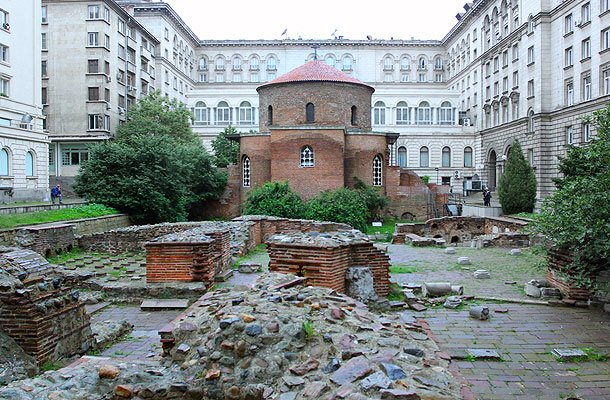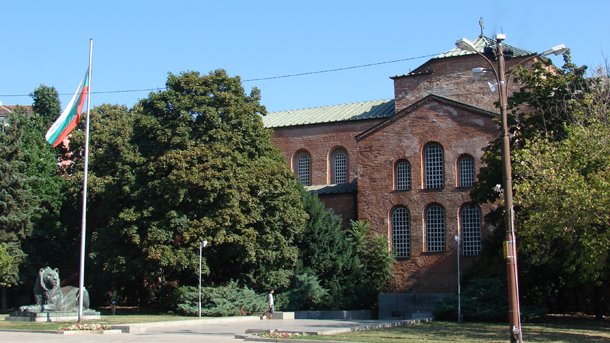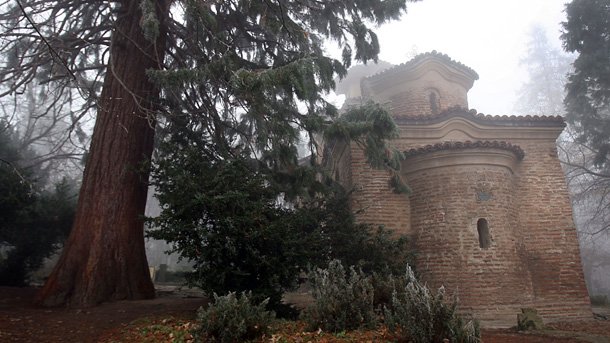September 17, the Feast of St. Sophia and her martyr daughters Faith, Hope and Love, is celebrated as the Day of the City of Sofia. It is believed that the city was named Sofia after the St. Sophia Church. Its theological meaning is the Wisdom of God. The church rose in 4 c. over the remains of ancient temples. A relatively young capital (since 1879), Sofia is one of the most ancient cities in Europe and has its own though still not widely known contribution into the continent’s cultural history.

We talk about a few symbolic events in Sofia’s past with the city’s Deputy Mayor Todor Tchobanov who is an archeologist.
“There is evidence of settled life here dated to the 7-6 millennium BC when no one lived in today’s European capitals. In fact, the Neolithic revolution spread across Europe from here. This included settled life for the first time, animal husbandry, religious beliefs and all components of civilization that accounted for the beginnings of the European culture.”
The city’s crossroad location between the East and the West was the source of its importance in the Classical Antiquity. During that era the city was called Serdica, a name deriving from the name of a local Thracian tribe.
“Sofia was and is at the center of the most important route connecting Europe with the East, the so-called diagonal route that Roman legions used to march along, and then attack their enemies in the East. This exactly made Serdica extremely important for Roman statehood. It is not for nothing that the city was pampered by emperors including Marcus Aurelius, Justinian the Great and others.”
The city’s strategic benefits show in the fact that over time, it was the capital of two Roman provinces – Thrace and Dacia. In 3 and 4 c. AD, the time of major collisions and changes in Roman society, the city became the arena of key events pertaining to the establishment of Christianity in Europe. Serdica was one of its earliest centers. “There is evidence that the Christian community in Serdica emerged as early as 1 c. AD”, Todor Tchobanov says, and adds that the city lived through its heyday during the reign of Emperor Constantine the Great and his predecessor Galerius.
“Galerius was born in Serdica. It was here that he issued a document that changed the cultural history of Europe, and why not of the whole world. This is the celebrated Edict of Serdica which permitted Christians to practice freely their religion that had been until then banned and persecuted by Roman emperors. This edict of tolerance sounds veryup-to-date even today.”

© Photo: bg.wikipedia.org
However, the city saw its greatest prosperity under Emperor Constantine the Great. His mother Helena was born in the town of Nis, today in western Serbia, not far from Sofia.
“Constantine often resided in Serdica that he loved dearly. It was written down that he used to say, ‘Serdica is my Rome’. Most probably, he built here one or more palaces and left behind some major structures from the late Antiquity that we have been digging out during archeological excavations.”

© Photo: archive
Serdica continued to be prosperous under Justinian the Great too, when the impressive basilica of St. Sophia was built to lend its name to the city. This period was followed by the turbulent era of the Migration of Peoples. The city resurrected for new life during the reign of the Bulgarian Khan Krum who conquered it in 809. He gave the city its medieval name Sredets, deriving from sreda, meaning middle, as it lied in the middle of the Bulgarian ethnic territory. Later, as the Bulgarian Kingdom was conquered by Byzantium, the name changed again, this time to Triaditsa. From 11 to 13 c. the city became the arena of the crusades. The Sofia Valley was virtually depopulated. In the late Middle Ages the city resurrected from the ashes once again.

© Photo: BGNES
“During the Second Bulgarian Kingdom, Sofia was where the second most influential Bulgarian boyar resided, Sebastokrator Kaloyan. In fact his mansion was on the outskirts of the city, in the village of Boyana. The Boyana Church which features on the UNESCO heritage list, displays clear evidence that Bulgarian medieval art prospered in the area of the so-called Sofia Holy Mountain, a ring of monasteries encircling the ancient city that grew in 13-14 c. The frescoes in the Boyana Church represent a major masterpiece, a harbinger of the western Renaissance”, Todor Tchobanov concludes.
During the Ottoman era (14-19 c.) Sofia ceased to be an important city to resurrect anew after the Liberation of Bulgaria from Turkish rule in 1878. A year later it was proclaimed capital of the young Bulgarian state.
English version Daniela Konstantinova
Archaeologists have discovered a very rare and valuable glass bottle in a 2nd-century tomb in the southern necropolis of the Roman colony Deultum near the village of Debelt (Southeastern Bulgaria). What makes it unique is that it depicts the myth of..
The Days of Croatian Archaeological Heritage, which will last until 8 November, begin today at the National Archaeological Institute with Museum at the Bulgarian Academy of Sciences (NAIM-BAS) in Sofia. The event is organised by the Croatian Embassy in..
Today, 6 November, marks 104 years since the annexation of the Western Outlands in 1920. Traditionally Bulgarian territories in south-eastern Serbia and northern Macedonia were ceded to the Kingdom of Serbs, Croats and Slovenes in 1920 as a result of..
On November 22 and 23, the Bulgarian Orthodox Church will solemnly celebrate the 100th anniversary of the consecration of the Patriarchal Cathedral "St...
The Patriarchal Cathedral of St Alexander Nevsky is celebrating its temple feast today. The cathedral, a symbol of the Bulgarian capital, was built "in..

+359 2 9336 661
